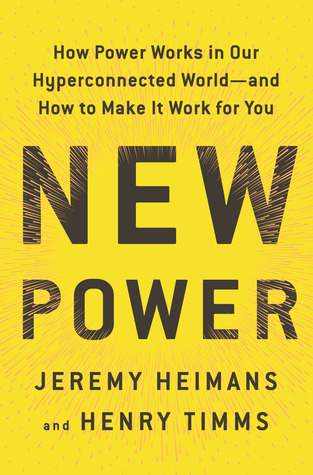More on this book
Community
Kindle Notes & Highlights
Read between
February 27 - March 1, 2020
Power, as philosopher Bertrand Russell puts it, is the “ability to produce intended effects.”
Old power works like a currency. It is held by few. Once gained, it is jealously guarded, and the powerful have a substantial store of it to spend. It is closed, inaccessible, and leader-driven. It downloads, and it captures. New power operates differently, like a current. It is made by many. It is open, participatory, and peer-driven. It uploads, and it distributes. Like water or electricity, it’s most forceful when it surges. The goal with new power is not to hoard it but to channel it.
Old power models ask of us only that we comply (pay your taxes, do your homework) or consume. New power models demand and allow for more: that we share ideas, create new content (as on YouTube) or assets (as on Etsy), even shape a community (think of the sprawling digital movements resisting the Trump presidency).
The future will be a battle over mobilization. The everyday people, leaders, and organizations who flourish will be those best able to channel the participatory energy of those around them—for the good, for the bad, and for the trivial.
Far from the organic free-roaming paradise the early internet pioneers imagined, there is a growing sense that we are living in a world of participation farms, where a small number of big platforms have fenced, and harvest for their own gain, the daily activities of billions.
More than one old power organization has found itself with a “chief innovation officer” or “director of strategic initiatives” parachuted in by a CEO desperate to uncover some magical revenue line, or to serve as public evidence that her leadership really is engaging with the new world. But despite good intentions, these people often end up as “digital beards,” providing cover for a risk-averse leader and an unchanging strategy, and relegated to the margins of power and influence within the organization. They are often a small department paid to think about the future, resented by the rest of
...more
Of course, for many young workers this is the story not just of their digital lives, but also of their childhoods. They were raised as part of a “trophy generation,” recognized for the act of participation rather than the level of performance, getting medals and lavish praise just for completing the race. The parenting philosophy that governed their early years—build self-esteem above all—conspires to deliver the same artificial feedback loops as most social networks: persuading the individual that the ordinary moments of their lives are actually of extraordinary value. Those who enter the
...more


